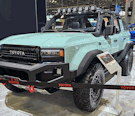Hidden key hole In 2024 the Chevrolet TRAX was given a new hidden key hole cover that we missed. It has a very BMW-like look cover that is removed using the mechanical key from behind like a Hyundai Santa Fe! We missed it in our recent update but spotted it at the Auto Show and …
Tag: hyundai
Permanent link to this article: https://dashboardsymbols.com/2025/06/the-two-forms-of-auto-brake-hold/
Permanent link to this article: https://dashboardsymbols.com/2025/04/chevy-trax-sports-new-hidden-key-hole-cover/
Chevrolet adds their new key hole cap to the Traverse
New key hole cap While perusing the Auto Show in New York yesterday, we discovered that the new key hole cap used on the Chevrolet Blazer EV has been added to the Traverse SUV. The same cap is used on the Honda Prologue EV and Acura ZDX EV models that were developed with the help …
Permanent link to this article: https://dashboardsymbols.com/2025/04/chevrolet-adds-their-new-key-hole-cap-to-the-traverse/
2025 New York International Auto Show reflections
Auto Show reflections As has been the case since COVID, the auto show reflections revolve around who didn’t show. Notably, Mercedes made its return for the first time. Stellantis was there in full force as well, including space for a Wagoneer, which a company representative noted is back under the Jeep moniker. They tried to …
Permanent link to this article: https://dashboardsymbols.com/2025/04/2025-new-york-international-auto-show-reflections/
The Hyundai dashboard symbols page is now re-ordered by color
Hyundai dashboard symbols Our Hyundai dashboard symbols page has now been re-aligned by color. There are now 34 pages that have been transformed to reflect the new color ordering, including our primary pictographic symbols page. This exceeds two thirds of the pages to be re-ordered, while we work our way through all our manufacturer symbols …
Permanent link to this article: https://dashboardsymbols.com/2025/01/the-hyundai-dashboard-symbols-page-is-now-re-ordered-by-color/
Dog Mode is slowly spreading
Dog Mode I have a friend who has had some recent headaches with her Tesla and has threatened to move on to another vehicle. But, she wonders why no one else has Dog Mode, which she makes great us of. Dog Mode allows the temperature in the car to be set, keeping the vehicle interior …
Permanent link to this article: https://dashboardsymbols.com/2024/11/dog-mode-is-slowly-spreading/
Kia Niro EV first impressions
Kia Niro EV The lease on my Polestar 2 recently expired, and I purchased a pre-owned 2022 Kia Niro EV outright (22,000 miles). Over the last few years a rather healthy used EV market has developed, which is great for the industry. The Kia does not have the prestige of the Polestar but there were …
Permanent link to this article: https://dashboardsymbols.com/2024/10/kia-niro-ev-first-impressions/





The two forms of auto brake hold
Brake hold We’ve now experienced two very different forms of Auto Brake Hold, and only recently adjusted the page to reflect it, 20 different images not withstanding. In any case, some manufacturers have the system active at all times. If the car is started, brake hold is ready to use by default. This was the …
Continue reading